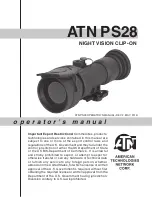Reviews:
No comments
Related manuals for SPACE LAUNCHER 50 09102

ATN PS28
Brand: ATN Pages: 48

SkyView Pro 120 EQ 9867
Brand: ORION TELESCOPES & BINOCULARS Pages: 20

SkyMatic
Brand: Levenhuk Pages: 8

Skyline Travel 50
Brand: Levenhuk Pages: 32

9026
Brand: Orion Pages: 16

Viking 60 AZ
Brand: zoomion Pages: 8

Gravity 150 EQ
Brand: zoomion Pages: 8

6450 Assembly and
Brand: Simmons Pages: 11

SmartStar A-R80
Brand: iOptron Pages: 2

Maksutov-Cassegrain
Brand: iOptron Pages: 5

SmartEQ 3100
Brand: iOptron Pages: 6

Photron RC10
Brand: iOptron Pages: 9

iExplore 70AZ
Brand: iOptron Pages: 12

SmartStar N114
Brand: iOptron Pages: 38

SmartStar G-MC90
Brand: iOptron Pages: 42

SmartStar 8405
Brand: iOptron Pages: 38

G Series
Brand: iOptron Pages: 36

SmartStar Cube 8800G
Brand: iOptron Pages: 48

















